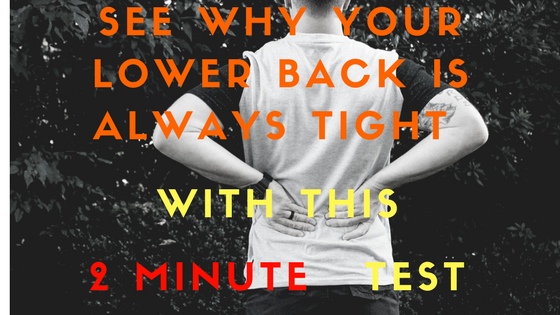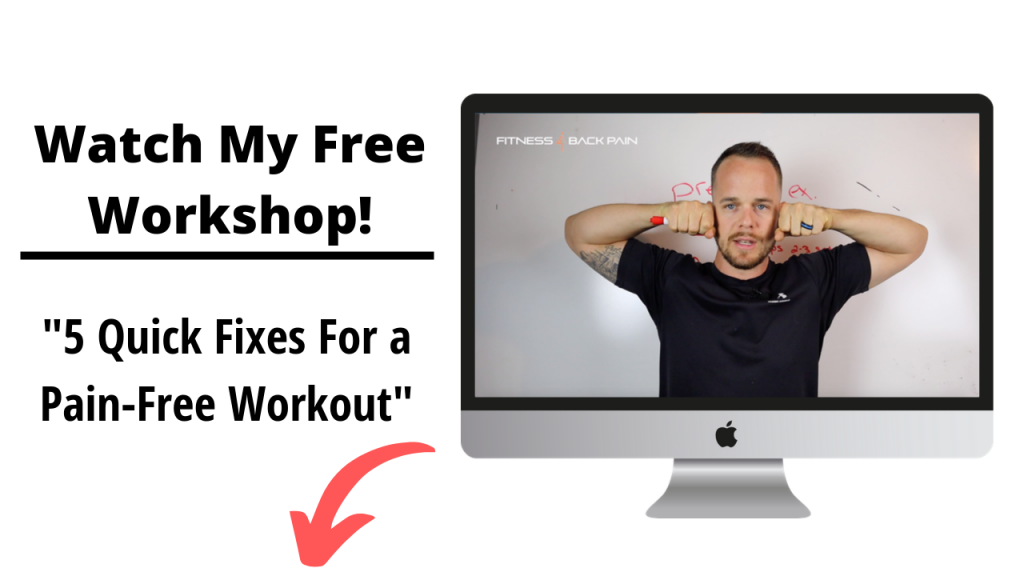
A trick I learned early on when trying to get control of my back pain was a simple technique you can use to tell whether or not your lower back muscles are contracted or relaxed. A part of your pain cycle is not giving your body the time it needs to relax and do its job. Instead, due to your desk job or the constant forward flexed posture your in all day, we begin to take on this posture. Well, it’s not the way our bodies were created so because of our forward flexed posture our posterior chain has to compensate to ensure that we remain upright. This is where that constant lower back stiffness comes in. Your lower back is over-worked due to the constant state of contraction you are in. Today I want to show you a simple self-test you can do that will teach you how to correct this exact issue!
Have you ever felt like your lower back was in knots after only 30+ minutes of being on your feet?
This is a pretty common issue a lot of people deal with and what I have found is that it’s less about stretching what feels tight more about improving the way the muscles upstream and downstream from the area are being used.
Let me explain.
For years I dealt with imbalances in my hips, core and lower back so because of this, my body would try to overcompensate for what I was lacking.
This lead to my lower back taking most of the loads that my hips were supposed to take. Long story short after a few hours of standing or sitting my lower back would get extremely tight. The pressure was extremely annoying and it felt like my belly was sticking out due to my lower back being so bound up.
A cool technique I was taught by Dr. Stuart McGill was how to TURN OFF your lower back muscles to bring relief.
You see, most of us deal with some amount of rounded shoulders, forward head posture or anterior pelvic tilt which keeps our lower back always on. This chronic stiffness leads to over-worked muscles and other issues up and down the kinetic chain.
This takes a little getting used to but as you get better you will notice how you don’t have to use your hands to tell whether or not you’re doing it right.
If you ever feel like your lower back is contracting or tight, practice stacking your segments and standing in a way that promotes a relaxed, standing posture.
BONUS Strategy For Reducing Lower Back Tightness!
There is something I like to call your “Protection Mechanism”. I’ll share this video below but be sure ot keep reading to leanr how to apply this to your current lower back tightness!
This is your bodies natural defense system against danger. Think of being caught off gaurd or scared by someone in your home. How does your body respond? Does it get tense? Does your heart start racing?
This is your bodies natural way of not only protecting itself from harm but whether or not you need to stand and fight or run away.
A low key variations of this is through Nuero-Signaling to different areas of the body. Take the lower back for example. You may have had a fusion or some other surgery so consciously you know the area is “fragile” and subconsiously your body wants to protect that area since you believe that it is fragile (its actually not fragile at all).
So the brain sends signals to that area telling the muscles to stiffen and tighten to protect that now “fragile” area. This creates mental patterns that turn a short term recovery from surgery into a life time of chronic pain.
This is something we address heavily in Relief Academy!
Once you grasp the power of the mind body connection chronic pain will make more sense both mechaniclaly and mentally!
Thanks for reading!
Oh and don’t forget to share this with someone you love! You could really help them out!
Your Coach,
William

